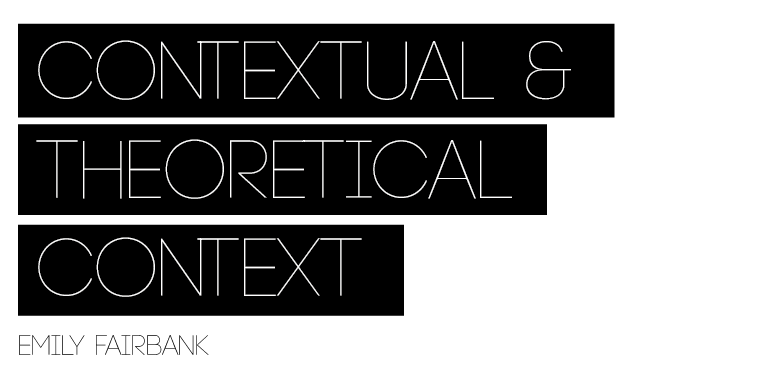- More of a harmful resource - manipulative. It is the most effective and dominant medium in the 20th century
- in 21st century, impossible to escape advertising (times square new york) - everywhere we walk we are subjected to media messages/promises/fanticy figures/ideals e.g. billboards, tv, radio, internet.
- Can chose to ignore them but they all affect us - unconcions/concious, direct/indirectly affects you on some level
- Britain - 25 million new print adverts produced every year - range from newspapers (selling garden ware) to billboard adverts (big business, commerce)
COMMERCIAL CONSUMER ADVERTISING
- KARL MARX 1818-83 - wrote about Capitalism and how it has an effect on individual in the society - many people then wrote about advertising in a Marxist way.
- Says that we could live in a CONSUMER/COMMODITY culture. 'The Commodity self' - Steward Ewin. Judith Williamson quote "Instead of being identified by what they produce, people identify themselves through what they consume" (instead of you measuring yourself by what you can do (intelligence, achievements, characteristics) we measure it by what people own/what they can buy. = our culture is a debased version of real life.
- EXAMPLES of commodities which people judge by - cars, laptop, houses, clothes/shoes, jewelry, music listend to (it becomes a physical record of your identity/who you aim to be). Increasingly we are buying these things to become this person/our culture persuades ourselves that we need something in order to become X. Housing etc become symbols of you as a person for everyone else.
- We strive to get things which things represent who we are AND we judge people according to what their commodities are. Snobbery - M & S vs Aldi shopping bag. It could make people work harder to strive to achieve/buy certain things to prove themselves.
- GLAMOROUS - is the condition of being envied/cant afford not to be glamourous (Through the consumption of products.) Glamour is a product of our contemporary lives - measuring ourselves again our unattainable ideas.
- ADVERTISING - isn't very successful of selling things. Selling the promise of an improved version of your life through the purchasing of things.
SYMBOLIC ASSOCIATIONS - make things seem more powerful than they are.
- CK1 PERFUME - sociability, community, popularity is being sold here. Men and women in close proximity - the advert doesn't actually show u what it smells like, they just advertise the effect which it will 'supposedly' happen. Youth, sophistication, coolness, fashion, status and glamour. Androdginity - woman with shaved head, more developed sexuality (not blond bimbo). Images like this create a FALSE DESIRE to purchase these
- PUBLICITY - when you walk into town, you have everything you need but when you walk past shops and boutiques you feel the need to purchase. It persuades us to keep spending/buying through the promotion of false
HOW DOES COMMODITY CULTURE PERPETUATIONS FALSE NEEDS?
- aesthetic innovation - you keep coming back for the next upgrade even though you already have one.
- planned obsolesce - planned for them to break so the customer has to keep buying a new one,
- novelty.
COMMODITY FETISHISM
- basically, advertising conceals the background 'history' of products. in other words the context in which a product is produced is kept hidden.
REIFICATION
- products are given human associations.
- Products themselves are perceives ad sexy, romantic, cool, sophisticated, fun etc.
- Humanity is placed onto objects eg. boots are sexy. An furthermore, people start using these personified objects as characteristics.
Frankfurt school - commodity colture manipulates us and makes us thing one dimensionally - it prevents us living full, meaningful and creative lives.
John Burger - ways of seeing - strange connection now between modle and old art as the model now represent perfection. Rather than being an abstract image of perfection (statue).
ADVERTISING (economy, subsidizing the media quality, stereotyping) creates wealth for our world. It puts a lot of money in society, it encourages choice and gives us the illusion of freedom but this illusion is freedom is questionable - how free are you really when you constantly being told you have to be better.
Advertisers get money from us. We can watch tv for free because of adverts.
It is successful at challenging stereotypes - it is also one of the worst industries at perpetuating the worse stereotypes.
It makes us unhappy with our lives and possessions. It potentially manipulates people into buying product that they dont really need/want.
It encourages additive, obsessive and acquisitive behaviour.
it distorts the language between people
It encourages consumers especially children to want products and brands that they cannot afford, causing feelings of inadequacy and envy.
It uses images that encourage us to buy products and brands that have been potentially unhealthy
it encourages unnecessary production and consumption therefore depleting the worlds resources and spoiling the environment.


.jpg)